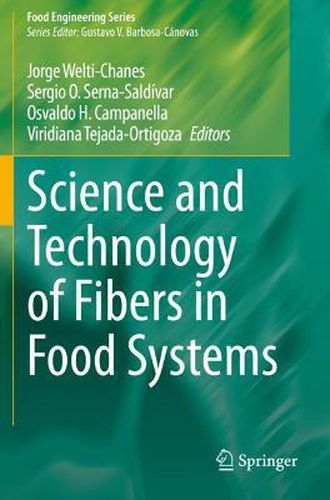Readings Newsletter
Become a Readings Member to make your shopping experience even easier.
Sign in or sign up for free!
You’re not far away from qualifying for FREE standard shipping within Australia
You’ve qualified for FREE standard shipping within Australia
The cart is loading…






This title is printed to order. This book may have been self-published. If so, we cannot guarantee the quality of the content. In the main most books will have gone through the editing process however some may not. We therefore suggest that you be aware of this before ordering this book. If in doubt check either the author or publisher’s details as we are unable to accept any returns unless they are faulty. Please contact us if you have any questions.
This text provides comprehensive coverage of fibers used in food formulations, starting with the understanding of their basic chemical structure and how they are present and organized in the cell wall structure, their physicochemical and functional properties, their impact on the digestive process and their role and preventive action against various chronic diseases including colon cancer. The book focuses on traditional and new fiber rich sources, incorporating an integrated approach in terms of the technological and engineering processes used to obtain and incorporate them in traditional foods, plus their characterization, extraction and modification. The study of processing conditions including the chemical, physical and enzymatic processes of fiber extraction and modification are also covered, including traditional and emerging processing technologies, plus the application of fibers in the development of new products and processes.
Science and Technology of Fibers in Food Systems integrates knowledge of fibers from their basic structural and property aspects and the applications of these ingredients to extraction process analysis, modification and feasibility for use at the industry level. The chapters incorporate the physiological aspects related to the consumption of fiber for prevention of serious diseases.
$9.00 standard shipping within Australia
FREE standard shipping within Australia for orders over $100.00
Express & International shipping calculated at checkout
Stock availability can be subject to change without notice. We recommend calling the shop or contacting our online team to check availability of low stock items. Please see our Shopping Online page for more details.
This title is printed to order. This book may have been self-published. If so, we cannot guarantee the quality of the content. In the main most books will have gone through the editing process however some may not. We therefore suggest that you be aware of this before ordering this book. If in doubt check either the author or publisher’s details as we are unable to accept any returns unless they are faulty. Please contact us if you have any questions.
This text provides comprehensive coverage of fibers used in food formulations, starting with the understanding of their basic chemical structure and how they are present and organized in the cell wall structure, their physicochemical and functional properties, their impact on the digestive process and their role and preventive action against various chronic diseases including colon cancer. The book focuses on traditional and new fiber rich sources, incorporating an integrated approach in terms of the technological and engineering processes used to obtain and incorporate them in traditional foods, plus their characterization, extraction and modification. The study of processing conditions including the chemical, physical and enzymatic processes of fiber extraction and modification are also covered, including traditional and emerging processing technologies, plus the application of fibers in the development of new products and processes.
Science and Technology of Fibers in Food Systems integrates knowledge of fibers from their basic structural and property aspects and the applications of these ingredients to extraction process analysis, modification and feasibility for use at the industry level. The chapters incorporate the physiological aspects related to the consumption of fiber for prevention of serious diseases.